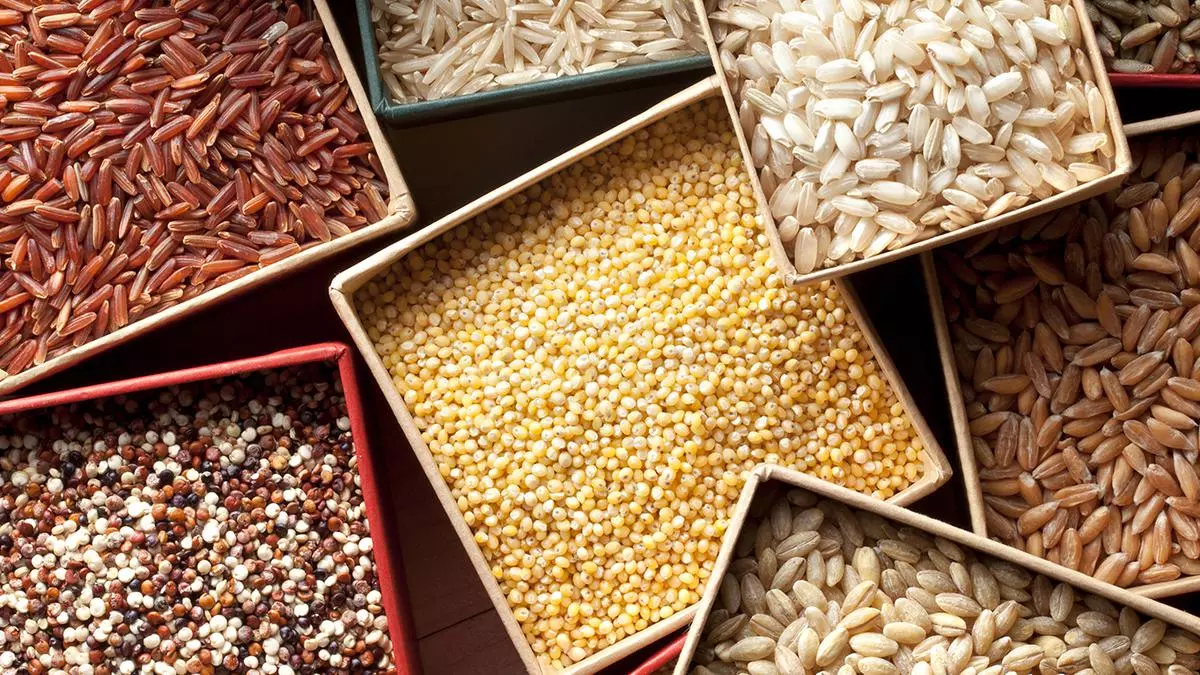Global grains market likely to be bearish as supplies ease
The global grains market will likely be bearish this year with supply pressures which built up during the Covid-19 pandemic easing. The decline in the Food and Agriculture Organisation’s Food Price Index (FPI) for the seventh month in a row in February is another indication of the emerging trend, say analysts.
According to the Food and Agriculture Organisation (FAO), an arm of the UN, FPI was 117.3 points in February 2024, down 0.9 points from January. This was mainly in view of a decrease in the price indices for cereals and vegetable oils. This more than offset the increases in prices of sugar, meat and dairy products. Compared with the year-ago period, the FPI was down 13.8 points (10.5 per cent).
“We remain bearish as to the outlook for the international grains markets in 2024 although we highlight that recent price declines across certain commodities, such as corn and wheat, have overshot our forecasted average year-on-year price declines through the start of 2024 to date,” said research agency BMI, a unit of Fitch Solutions.
Speculator pessimistic
The International Grains Council (IGC) said the estimate for world total grains production in 2023-24 is higher almost entirely because of maize. Including increases for maize industrial use and feeding, the forecast for grains’ consumption is 2,310 million tonnes (mt), though the carryover may be lower at 589 mt.
The FAO said prices of all major cereals declined month on month in February globally. “Maize export prices dropped the most as expectations of large harvests in Argentina and Brazil, along with competitive prices offered by Ukraine eager to take advantage of the smooth running of the maritime trade route, weighed on the market,” it said.
A six per cent rise forecast in maize production to 1,234 mt in 2023-24 compared with 1,163 in 2022-23 is mainly responsible for the bearish outlook. Currently, global maize prices are lower by about 35 per cent year-on-year.
BMI said speculators remain pessimistic, with the net short positions held by money managers in corn and wheat contracts all at their largest for at least the past five seasons. “We expect that the recent price declines will start to reflect in farmer planting decisions as, for instance, indicated by the USDA’s projections for US grains acreage in 2024,” it said.
Lower Feb exports
According to data from the US Commodity Futures Trading Commission, bets on maize prices falling are the highest in 20 years, while in the case of soyabean it is at a record high. Short positions or bets on wheat prices dropping are also huge.
FAO’s Agriculture Market Information System (AMIS) said 2023 production is up on a higher estimate for Ukraine. Though wheat production is projected 2.3 per cent lower at 787.3 mt, global trade will likely be 1.2 per cent lower, it said. BMI said the US Department of Agriculture raised wheat supplies forecast last week by 0.8 mt.
FAO said prices declined in February on lower export quotations due a strong export pace from the Russian Federation, which exerted downward pressure on prices from other origins, in particular the European Union.
“In line with the softer tone in wheat and maize markets, world prices of barley and sorghum also eased,” the UN agency said.
BMI said conversely prospects for global wheat and corn prices are less optimistic. “Anticipated improvements in production and exportation are expected to prevent any substantial price increases over the course of the year,” it said.
Rice may be an exception
Prices of oilseeds, particularly soyabean, will also be under pressure on projections of a 5 per cent higher production. According to the IGC, soyabean production is estimated at 391 mt compared with 373 mt last season.
AMIS said the oilseed’s trade will be lower and stocks will be virtually unchanged on accumulation in the US. The USDA said though there have been some losses in the Brazilian soyabean crop, it has been offset by increased rapeseed production in India, Russia, and Ukraine.
BMI said forecasts for lower crushing activity and a surge in exports from Brazil are likely to keep a lid on any potential rise in global soyabean prices. “This trend is reflected in the price as of March 8, which stood at 1184 US cents a bushel —13.3 per cent lower than the average price observed during 2023,” it said.
Rice could be an exception, though the USDA has projected a higher output and marginal drop in offtake. The FAO said rice prices dropped in February as exports were slow and new crops were due for harvest in supplying nations.
